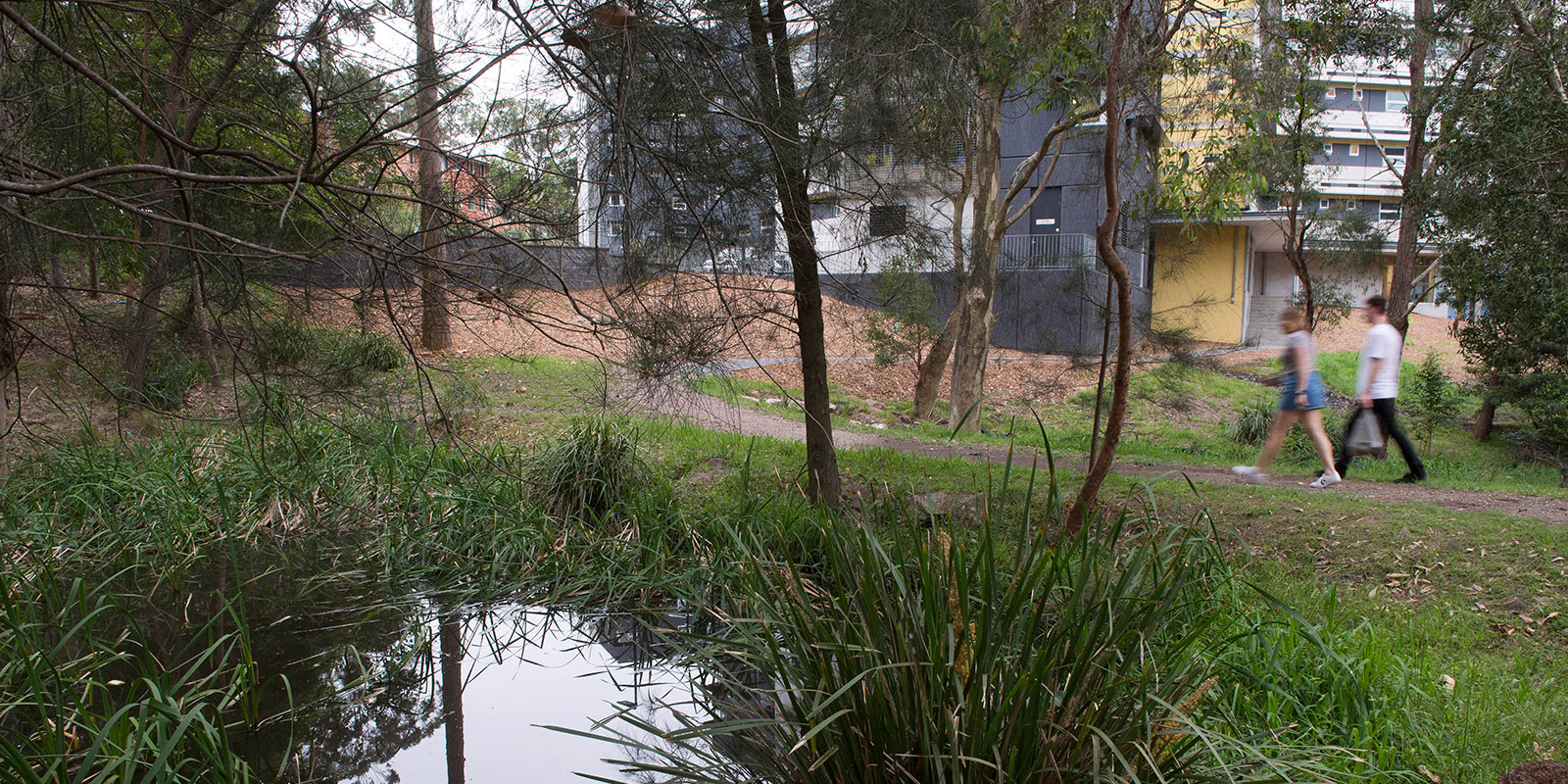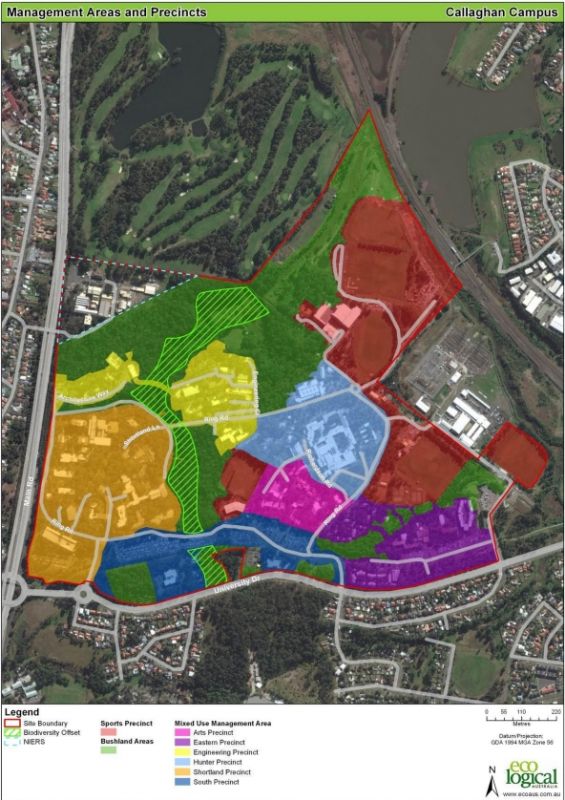

Goal 14:
Life Below Water
Watershed Management Strategy
The University of Newcastle has implemented a site-specific watershed management strategy through the Callaghan Landscape Management Implementation Plan (CLMIP), which incorporates the protection and management of aquatic ecosystems based on the unique biodiversity of the local area.
Callaghan Campus Watershed Management
- The Callaghan Campus spans approximately 140 hectares, with around 25 hectares of remnant native bushland and wetlands, including areas of high aquatic ecological value.
- These wetlands and connected waterways are part of the local watershed, contributing to regional hydrological and ecological functions.
- As shown in Figure 1 (pg. 5) of the CLMIP, the campus includes a defined Biodiversity Offset Zone, where aquatic and terrestrial habitats are protected and actively managed.
Biodiversity-Based Management
- The Plan guides bushland and wetland conservation based on the presence of location-specific native species and ecological communities.
- Management practices are aligned with the University’s Environmental Sustainability Policy, ensuring compliance with environmental regulations and protection of sensitive aquatic habitats.
- Strategies include:
- Runoff and stormwater management to protect downstream aquatic systems,
- Vegetation rehabilitation to maintain water quality and bank stability,
- Monitoring of flora and fauna, including aquatic species that serve as indicators of ecosystem health.
Supporting Actions:
- The watershed management strategy is embedded into broader campus planning and development guidelines, ensuring that infrastructure growth does not compromise aquatic biodiversity.
- Integration of teaching and research with on-site natural ecosystems provides students with real-world experience in watershed ecology, conservation biology, and environmental management.
This integrated approach demonstrates the University of Newcastle’s commitment to protecting aquatic biodiversity and watershed health through location-specific, science-informed management practices.


The University of Newcastle acknowledges the traditional custodians of the lands within our footprint areas: Awabakal, Darkinjung, Biripai, Worimi, Wonnarua, and Eora Nations. We also pay respect to the wisdom of our Elders past and present.